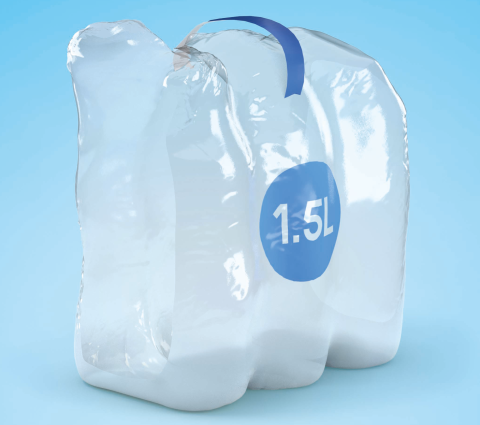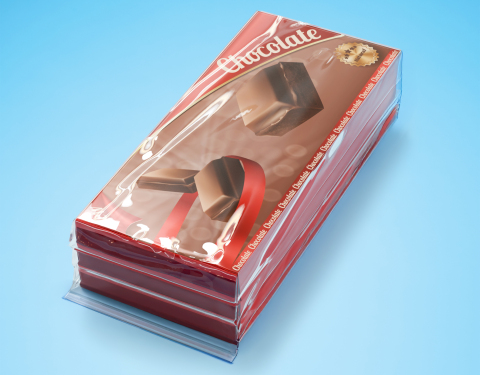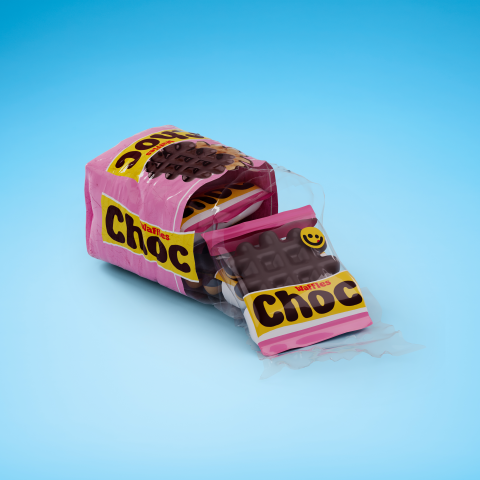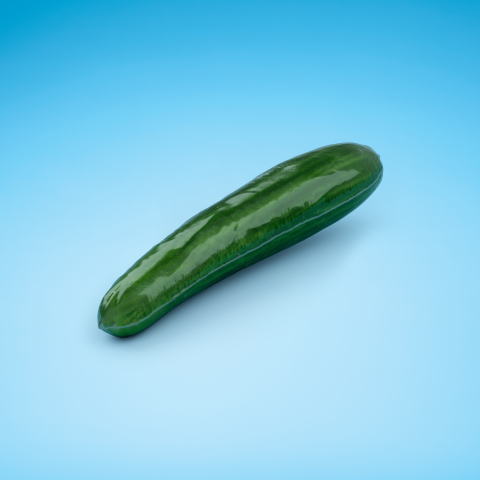Contact point overpackaging
Together for less overpackaging
Packaging is part of our daily lives. They protect our products, make them last longer and make transport, storage and consumption easier. We can hardly imagine a world without packaging.At the same time, we are becoming increasingly aware of the impact packaging has on our environment. Today, manufacturers are already making efforts to avoid packaging and are using mostly recyclable materials. However, we know that there is still a long way to go. That's why we are calling on you, via this website, to point out packaging that you think could be improved.
When do we speak of overpackaging?
Using more packaging than is strictly necessary to protect the product has a negative impact on the environment. But the environmental impact of product loss due to poor packaging is often far greater than too much packaging.
Ideally, the amount of packaging used for a product should be the smallest amount necessary. In practice, the recyclability of the packaging should be considered: the lightest packaging is not necessarily recyclable. Also, if the change of packaging requires a change of machine on the manufacturing line, it may take several years before the new packaging is available on the market.
In the coming years, the new European Packaging and Packaging Waste Regulation (PPWR) will impose restrictions on different types of packaging to reduce their impact on the environment.
Top 5 notifications
For some of the packaging frequently reported via this form, we have compiled initial responses in section below. This does not mean that we and the producers have no ambition to reduce or modify such packaging, but it will help to explain why such packaging are currently used.
Grouped packaging can be used to facilitate logistics and transport by producers and distributors, as well as transport by consumers. It is indeed impractical to carry several bottles at a time if they are not somehow held together.
The plastic films used for these group packaging are recyclable. They are generally made of polyethylene and are can be sorted in the blue PMD bag. They are recycled into new films in Belgium.
Several brands and supermarkets are currently developing alternatives to these films.
Some alternatives use less material, while others are reusable. For example, a number of supermarkets now offer small reusable crates for 6 bottles of beer, in addition to the large crates already available for 24 bottles.
In the coming years, the new European regulation on packaging and packaging waste (PPWR) will impose restrictions on single-use plastic group packaging which should help accelerate the transition to better alternatives.

In the coming years, Fost Plus will be aiming to play an important role in the areas of prevention and reuse and guiding companies through this important transition. Our ambition is to become a leader in these areas, just as we have been in recycling for the past 30 years.
In the coming years, the new European regulation on packaging and packaging waste (PPWR) will impose restrictions on single-use plastic group packaging which should help accelerate the transition to better alternatives. In the coming years, Fost Plus will be aiming to play an important role in the areas of prevention and reuse and guiding companies through this important transition. Our ambition is to become a leader in these areas, just as we have been in recycling for the past 30 years.
Grouping packaging can be used to facilitate in-store logistics, particularly during promotions. Thanks to this packaging, shelves can be restocked more quickly and waiting times at the checkout are reduced, which also lowers the cost of the final product for consumers.
The plastic films used for these group packaging are recyclable and can be sorted in the blue PMD bag.
Several brand owners and retailers are currently developing alternatives to these films. For example, some are opting for narrow plastic or paper packaging. This change can take time, as machines generally have to be adapted. For certain types of packaging, it is more difficult to find an alternative.

In the coming years, the new European regulation on packaging and packaging waste (PPWR) will impose restrictions on single-use plastic group packaging, which should help accelerate the transition to alternatives. In the coming years, Fost Plus will be aiming to play an important role in the areas of prevention and reuse and guiding companies through this important transition. Our ambition is to become a leader in these areas, just as we have been in recycling for the past 30 years.
Did you know that you can leave promotional packaging in the store? Of course, this doesn't prevent the packaging from being used, but it does simplify collection.
Some food products quickly lose their freshness or flavour once the packaging has been opened. To avoid consumer dissatisfaction and food waste, these products are often packaged individually. As explained above, food waste can generally has a greater environmental impact than packaging, since all the energy and raw materials used to produce food products are lost.
Moreover, for certain products consumers expect a certain level of convenience that only a packaging can provide. Think about small individual portions for children and small families, or portions that can be taken to school or on a walk.
The secondary packaging then has a logistical and practical function for the producer, distributor and consumer, as it is not convenient to transport individually wrapped biscuits or cookies one by one.
This packaging is most of the time recyclable: often a transparent polyethylene film, polypropylene film or a cardboard box.

Some of these packaging could be improved by reducing the empty space or incorporating recycled content, for example. Before removing a part of the packaging, the estimated impact on food waste should be studied.
If a layer of packaging has clearly no function, it should be removed. Thanks to the form on this page, a packaging for chocolate bars was improved in 2023: a consumer notified Fost Plus via the overpackaging form that the chocolate bars were packed individually, then placed into a first group packaging, several of which were grouped together in a third packaging. After receiving the notification, the producer removed a layer of group packaging.
Did you know that you can leave promotional packaging in the store? Of course, this doesn't prevent the packaging from being used, but it does simplify collection.
Most distributors base their choice of packaging on tests or studies. The aim is to minimize food loss and waste, both in the store and at the consumer's home.
In some cases, packaging can reduce food waste sufficiently to offset its environmental impact. Recently, OVAM (Public Agency for Waste in Flanders) realized a study about the use of single-use packaging for different fruit and vegetables. The results are publicly available here (summary in English available).
Although most fruit and vegetable packaging is recyclable, various alternatives to eliminate or reuse packaging for fruit and vegetables are currently being studied.
Note that European regulation EU 2018/848 requires to avoid commingling of organic fruits and vegetables with non-organic fruits and vegetables, which can explain the use of packaging in some cases. Finally, in the coming years, the new European regulation on packaging and packaging waste (PPWR) will impose restrictions on single-use plastic packaging for fruit and vegetables under 1.5kg.

Fost Plus will be aiming to play an important role in the areas of prevention and reuse and guiding companies through this important transition. Our ambition is to become a leader in these areas, just as we have been in recycling for the past 30 years.
Certain types of packaging, such as cardboard boxes or transport packaging, have standard shapes or volumes. When a product is shipped, the standard packaging size closest to that of the product should be used, but it may be larger than necessary.
Some e-commerce companies have already taken initiatives to reduce their packaging use, by stopping using additional packaging for the delivery of equipment that is already solidly packaged, such as household appliances.
In the coming years, the new European regulation on packaging and packaging waste (PPWR) will impose restrictions on group, transport and e-commerce packaging such as a maximum empty space of 50% of the volume.

Fost Plus will be aiming to play an important role in the areas of prevention and reuse and guiding companies through this important transition. Our ambition is to become a leader in these areas, just as we have been in recycling for the past 30 years.
Do you think a package is too big for the product, or doesn't serve a particular purpose?
Let us know. Use the form below to provide a description of the product, the packaging, the brand and the point of sale.
We'll respond to your report as soon as possible and pass it on to the relevant producer.
